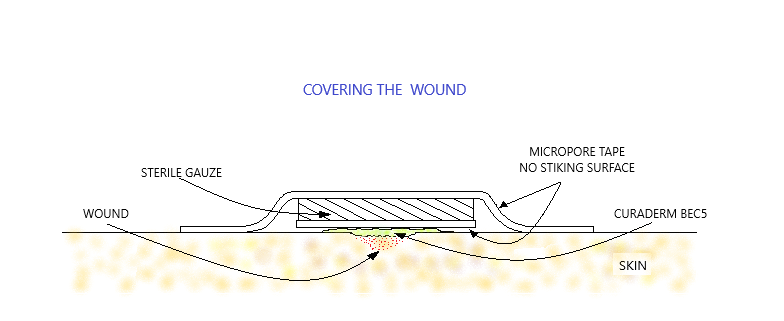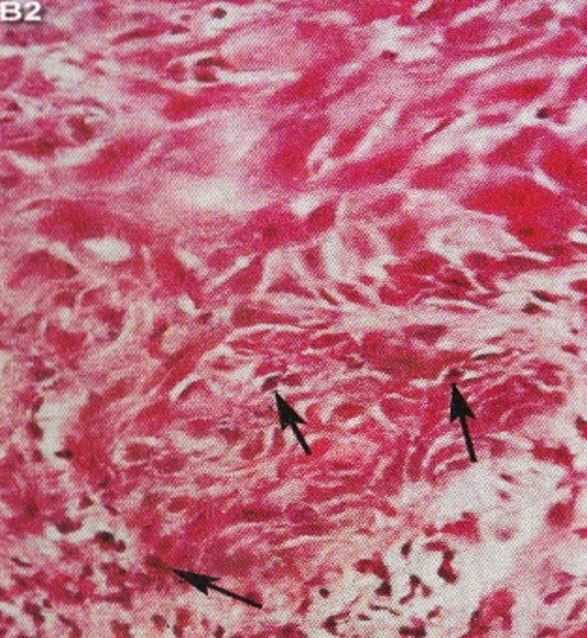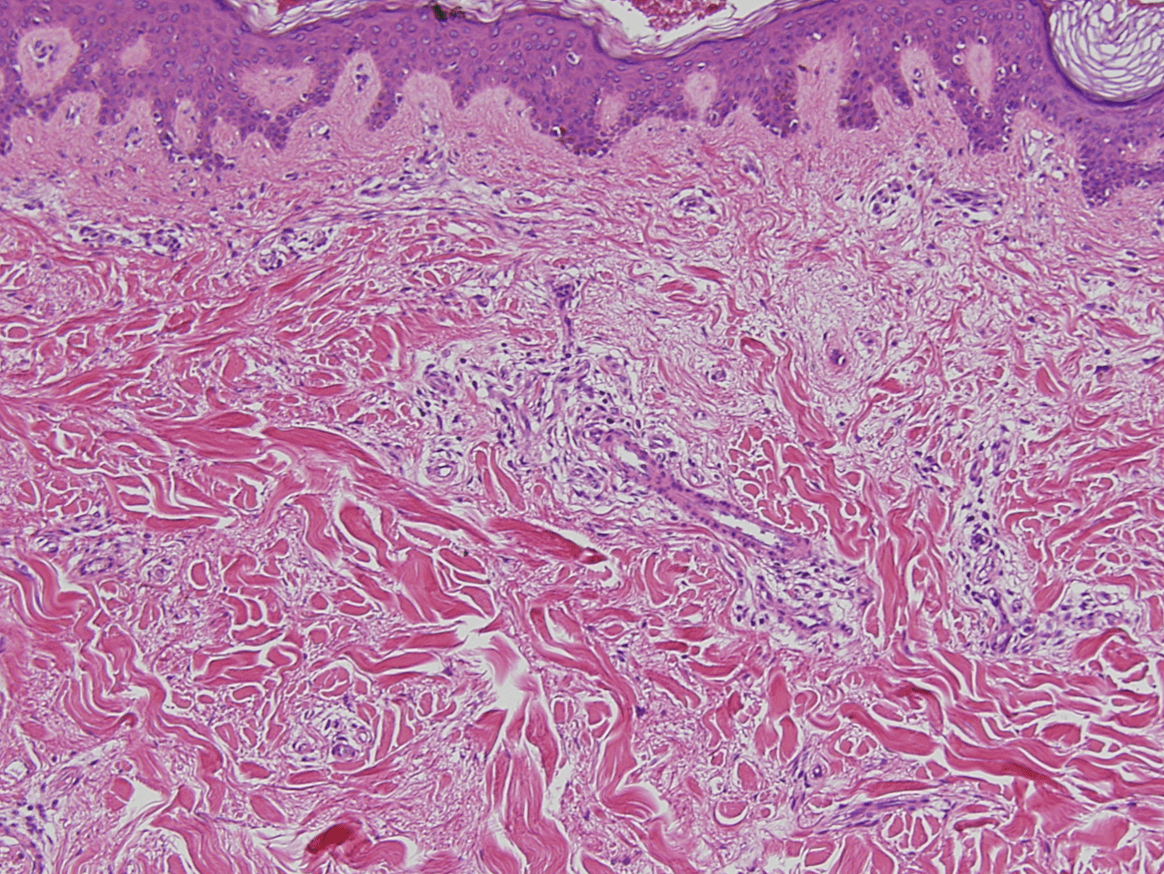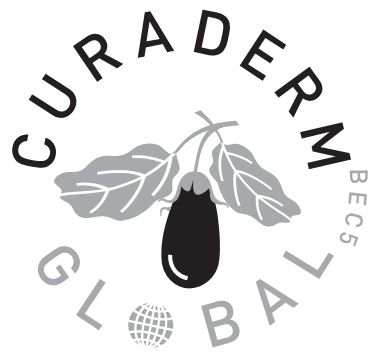CURADERM OUR SIGNATURE BRAND
It all started with our signature product Curaderm, a topical treatment for diseases of global health importance that causes substantial psychosocial impacts and requires considerable investment in terms of treatment and technologies.
Curaderm has been fully evaluated through evidence-based research and is supported by many independent refereed published scientific articles and books.
Curaderm is a topical treatment with keratolytic action and antineoplastic activity in the treatment and healing of localized basal cell carcinoma of the skin.
CURADERM – *BEC5, ZYCURE
Curaderm, also known as BEC5 or Zycure contains the natural anti-cancer components BEC and is the only established drug that uses targeted therapy (also called precision medicine) to treat skin cancer.
Curaderm Successfully Treats
Basal Cell Carcinoma
Topical Solasodine Rhamnosyl Glycosides Derived From the Eggplant Treats Large Skin Cancers: Two Case Reports. International Journal of Clinical Medicine. 2(4), 473-477.
Doi: 10.4236/ijcm.2011.24080
Curaderm, the Long-Awaited Breakthrough for Basal Cell Carcinoma. International Journal of Clinical Medicine. 11(10), 579-604.
Do
Keratosis
Cham, B.E.
Holistic Approach in the Treatment of Actinic Keratosis: Benefits and Disadvantages of 5-Fluorouracil, Imiquimod, Diclofenac and Curaderm. International Journal of Clinical Medicine. 14,319-331.
Doi: 10.4236/ijcm.2023.147027
Squamous Cell Carcinoma in Situ
Keratoacanthoma
Curaderm and Melanoma
CuradermBEC5 is not a recommended for the treatment for Melanoma.
Melanoma is potentially a deadly type of skin cancer and should be handled accordingly. There are different stages of melanoma ranging from stage 0 to stage 5. Limited studies have shown that Curaderm may be effective for melanoma stages 0 to 2. Elaborate phase III clinical studies are necessary to establish if this is the case. It is difficult to clinically (by looking at the lesion) establish what stage of melanoma a patient may have. Therefore, currently it is highly recommended to remove the melanoma lesion by surgery. Thus Curaderm should at this stage not be used to treat any melanoma.
HOW CURADERM WORKS
Curaderm precisely identifies, attacks and kills only cancer cells by a process of apoptosis (forces the cancer cells to commit suicide). Normal cells are not affected by this targeted therapy.
Traditional chemotherapy with, for example fluorouracil, is cytotoxic to most cells, meaning fluorouracil and other chemotherapies can damage normal, healthy cells in addition to damaging and killing cancer cells.

COUNTERFEIT PRODUCTS
Very Importantly, it should be clearly understood, that it is not as simple as taking a crude extract of the Devil’s Apple berries or eggplant/aubergine and incorporating the extract in a cream to obtain a treatment for skin cancer.
Far from that, our studies shown conclusively that purified BEC is essential for effectiveness. The crude extract contains inhibitors (which block and obstruct) such as free rhamnose sugars and others that prevent the effectiveness of the cancer treatment.
Although eggplant does contain BEC it also contains the inhibitors, and the unprocessed crude extract cannot effectively treat cancer.
Unfortunately, there are self-made products that use crude extracts of eggplant or Devil’s Apple that claim efficacy. This is not he case. Be aware of counterfeit products that claim to do the same as Curaderm, on the contrary, counterfeit products maybe very harmful.
It is for the same reason why by ingesting eggplant no anti-cancer effects are observed.
How do I apply CuradermBEC5?
You apply the CuradermBEC5 to the dry clean skin lesion.
How much Curaderm do I apply?
You apply a thin layer (about 2 millimetres thick) of CuradermBEC5 directly onto the lesion. When you apply a micropore medical tape over the CuradermBEC5, it will spread out, this will cover the area that needs to be treated. Once the treatment starts your lesion may appear larger and you may need to apply more CuradermBEC5 to the lesion. Once it starts to recede, please apply less.
The lesion must be covered up during treatment?
Please keep the lesion covered during treatment with a micropore tape or a medical pad for larger lesions. These products are obtainable from your local pharmacy. This helps keep the CuradermBEC5 on the lesion and also helps protect it during treatment.

An occlusive dressing (medical tape) must be applied after application of Curaderm to skin cancer lesions.
What to expect when treating non melanoma skin cancer and when to stop treatment
Curaderm is unique in that it only destroys cancerous cells and it will not harm healthy ones.
It is normal for your lesion become larger during the initial phase of the treatment as the Curaderm is destroying the cancerous cells that often extend latterly and under the surface of the skin lesion. A skin cancer could be described like an iceberg, what you see of the surface is often a lot smaller than what is underneath the water.

Be assured that Curaderm won’t attack healthy cells and the lesion will heal over itself while you continue treatment.
Treatment with Curaderm could take two to twelve weeks. The length of your treatment with Curaderm depends on how large the lesion is (and remember this is not just what you see on the surface). There is no fixed time for a treatment with Curaderm, you should only stop treatment when the lesion has completely healed over with NEW healthy skin.
By continuing your treatment with Curaderm while you are healing the pH of the Curaderm keeps the lesion safe from infection. Also, if you were to cease treatment early you could never know for sure exactly whether all the cancerous cells have been destroyed and could leave yourself at an elevated risk of a reoccurrence.
Another reason to keep treating with Curaderm until the lesion has completely healed is because this is how Curaderm was tested in the clinical trials, and if you stopped treatment early then your statistical chance of success may be lower than those published about Curaderm (which has been over 95% in some trials).
OUTSTANDING COSMETIC OUTCOMES WITH CURADERM THERAPY
Curaderm selectively and specifically seeks out and eliminates skin cancer cells from normal skin cells, which remain unaffected. Whilst the skin cancer cells are dying by the Curaderm therapy, the normal cells are alive, multiplying and replacing the dead cancer cells during treatment! Curaderm therapy results in apoptosis of the cancer cells, the white blood cells (phagocytes) mop up the remains of the dead cancer cells. This results in the replacement of the killed cancer cells with healthy normal skin cells during treatment. Consequently excellent cosmetic outcomes occur with little or no scarring.

Clinical and histological diagnoses of a skin cancer during Curaderm therapy. Arrows indicate cancer cells being killed during Curaderm treatment. The observation of this type of cell death by apoptosis caused by Curaderm is similar to those obtained in cell culture studies. Normal skin cells are unaffected and replace the dead cancer cells.
The common feature of traditional treatments of skin cancer by surgical excision, Mohs micrographic surgery, curettage and electrodesiccation, chemotherapy, radiation, cryotherapy or laser therapy is that they are indiscriminate and nonspecific without targeting the tumor itself. Cancer and normal cells are killed by the process of necrosis, which is different to apoptosis. This leads to unwanted adverse effects in the surrounding tissue, which may be mummified, with scar formation or other cosmetically disfiguring results.

Histological diagnosis showing scar tissue obtained by traditional treatments.
